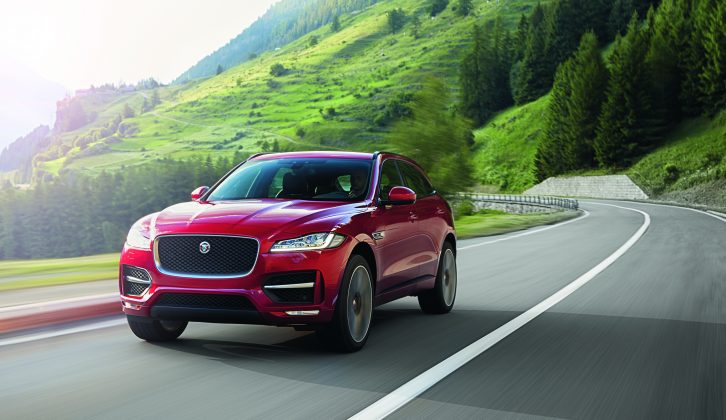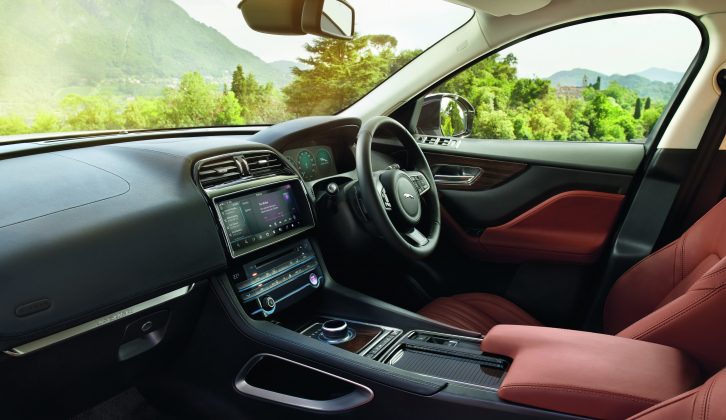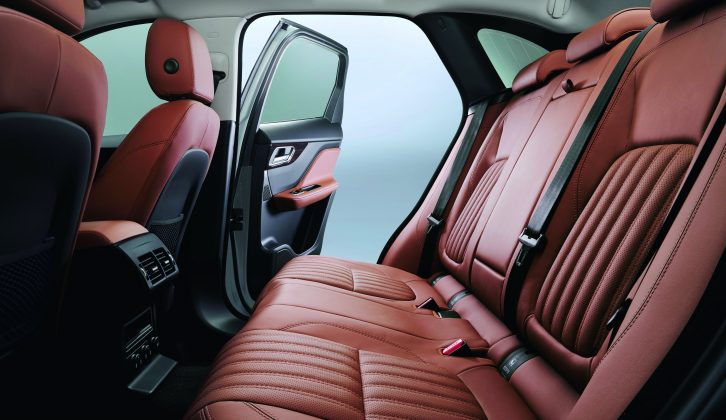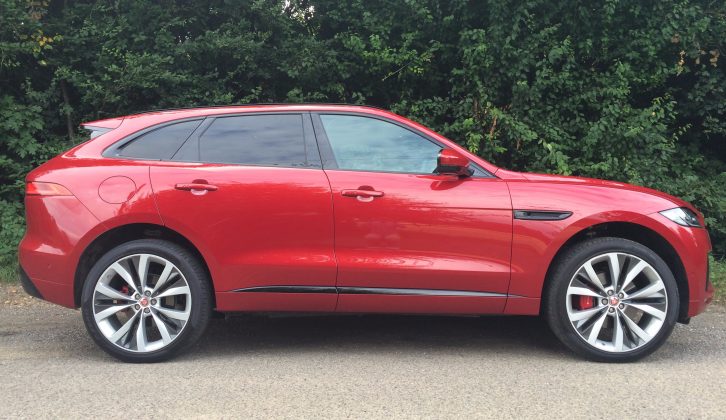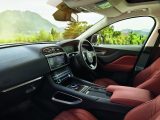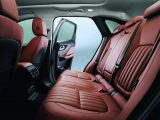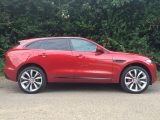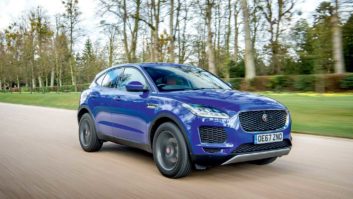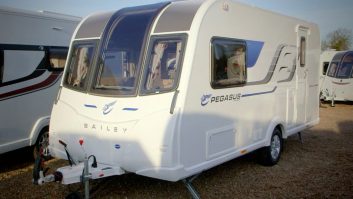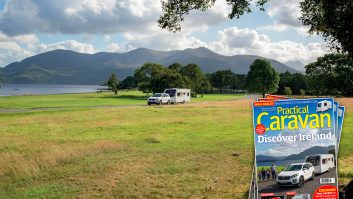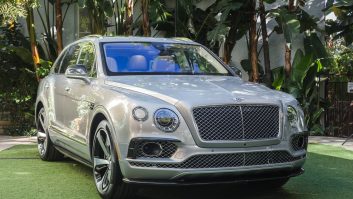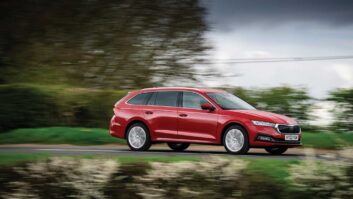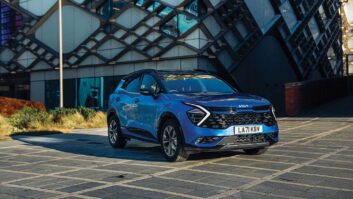Land Rover may have more tow car heritage than its sister company Jaguar, but over the years many of Jag’s saloons and estate cars have made very impressive tugs. Now Jaguar has edged into Land Rover territory with the launch of its first SUV, the F-Pace.
At first glance, the new Jaguar F-Pace seems to tread on Land Rover’s toes. If you’re shopping for an upmarket SUV, should you choose a Land Rover Discovery Sport, a Range Rover Evoque, or the new Jag?
There’s certainly some overlap between the three, but Jaguar Land Rover argues the cars appeal to different buyers. The F-Pace is the sporty option, more likely to win over a Porsche Macan driver than someone looking for the robust versatility of the seven-seat Discovery Sport.
If five seats are plenty and the Jaguar SUV’s more athletic looks catch your eye, then you have a choice of a 178bhp 2.0-litre diesel with either rear- or four-wheel-drive, a 296bhp 3.0-litre diesel 4×4, or a 375bhp 3.0-litre supercharged petrol 4×4.
The 2.0-litre makes the most affordable choice, especially for company car drivers who will benefit from modest tax bills thanks to carbon dioxide emissions as low as 129g/km, while the supercharged 3.0-litre is the model most likely to appeal to Porsche buyers and defectors from other high-performance brands.
For towing a big caravan, though, the 3.0-litre diesel looks like a good compromise, with plenty of pulling power but half-sensible running costs. Torque peaks at a mountainous 516lb ft, but the car emits 159g/km of CO2 and can achieve 47.1mpg on the combined cycle. Of course, in everyday driving you’ll be lucky to match that, but for a car with so much performance these are very respectable figures.
I haven’t yet had the chance to tow with the F-Pace (although we have a car booked for a full tow test in the autumn), but an engine with 296bhp and twice as much pulling power as a typical family diesel won’t have any trouble towing a suitably matched caravan.
With a kerbweight of 1884kg, the Jaguar F-Pace 3.0D Auto has an 85% match figure of 1601kg. The legal towing limit is 2400kg.
Sporting 4x4s with well-controlled suspension usually make stable tugs, and the F-Pace has the makings of a very secure tow car. Some reports have been critical of the Jaguar’s ride comfort on the standard suspension fitted to the 2.0-litre diesels, complaining that it sacrifices bump absorption in favour of iron-fisted control and prompt responses. The 3.0-litre diesel comes with more sophisticated suspension with Adaptive Dynamics, allowing the driver to alter the damping for an easy-going approach to rough roads or a more aggressive and dynamic feel. The system works in tandem with Jaguar Drive Control, which tailors the response of the throttle, gearbox and steering.
Leave the system in its ‘normal’ setting, and the ride is on the comfortable side of firm. It’s not limousine-plush and you can hear the suspension working at times, but it’s a good compromise for a performance car. Choose the ‘dynamic’ set up and you feel bumps more, but the springs are given less leeway to float or bounce before any movement is checked.
It is a big, heavy car, and feels larger than a Porsche Macan. It’s been a while since I drove the Porsche, but I’d say the German car has the edge for agility and feels more wieldy on narrow roads. But there’s not a lot in it.
Jaguar’s engineers have done a remarkable job with the F-Pace. There’s a willingness to make rapid direction changes which is at odds with a kerbweight of almost two tonnes, and the steering is fluent and precise. From the driver’s seat, Jaguar’s insistence that the F-Pace suits different buyers to any Land Rover rings true.
The engine deserves its share of praise, too. Jaguar claims a 0-60mph time of 5.8 seconds, which is only 0.7 seconds slower than the supercharged petrol version. The 3.0-litre diesel sounds so much better than the bland note of the four-cylinder 2.0-litre diesel – it’s as if you can hear all that torque as well as feel it.
So, the F-Pace fulfils its sporting brief well, but it’s also surprisingly practical. The driving position strikes a middle ground between an upright Land Rover position and the low-slung seats in one of Jaguar’s saloons. The seats are supportive and there’s plenty of head and legroom.
Those in the back have lots of space, too, and the width of the car means sitting three abreast won’t be a problem. Unlike the Discovery Sport there’s no third row of seats, but that helps make for a generous luggage capacity of 650 litres – that’s more than most estate cars.
If I have a criticism of the cabin, it’s that some of the plastics and trim don’t sit well with the 3.0D S model’s £51,450 price tag. The cabin isn’t shabbily put together by any means, but it doesn’t have the tactile quality or visual appeal of a Mercedes-Benz GLC’s interior.
That aside, there’s very little of substance to complain about. I’ve marked the date of this autumn’s tow test in red ink on my calendar…
There's a willingness to make rapid direction changes which is at odds with a kerbweight of almost two tonnes
